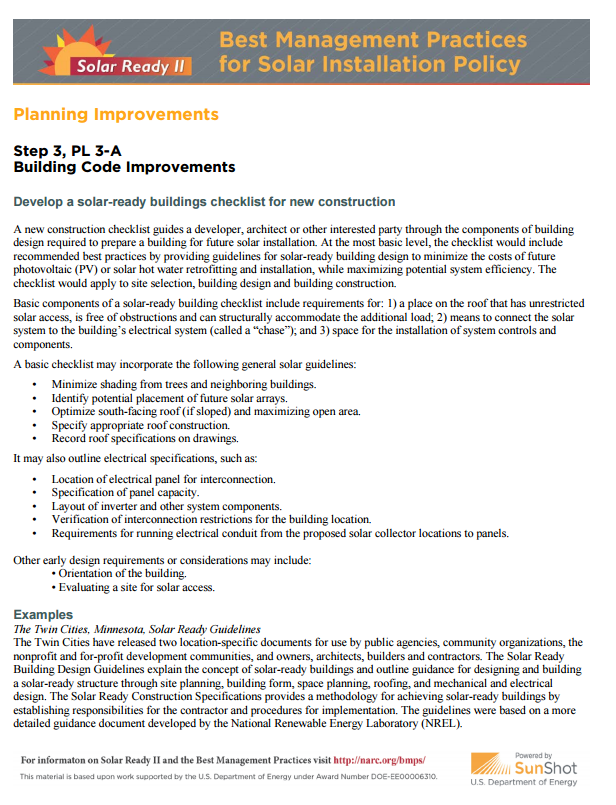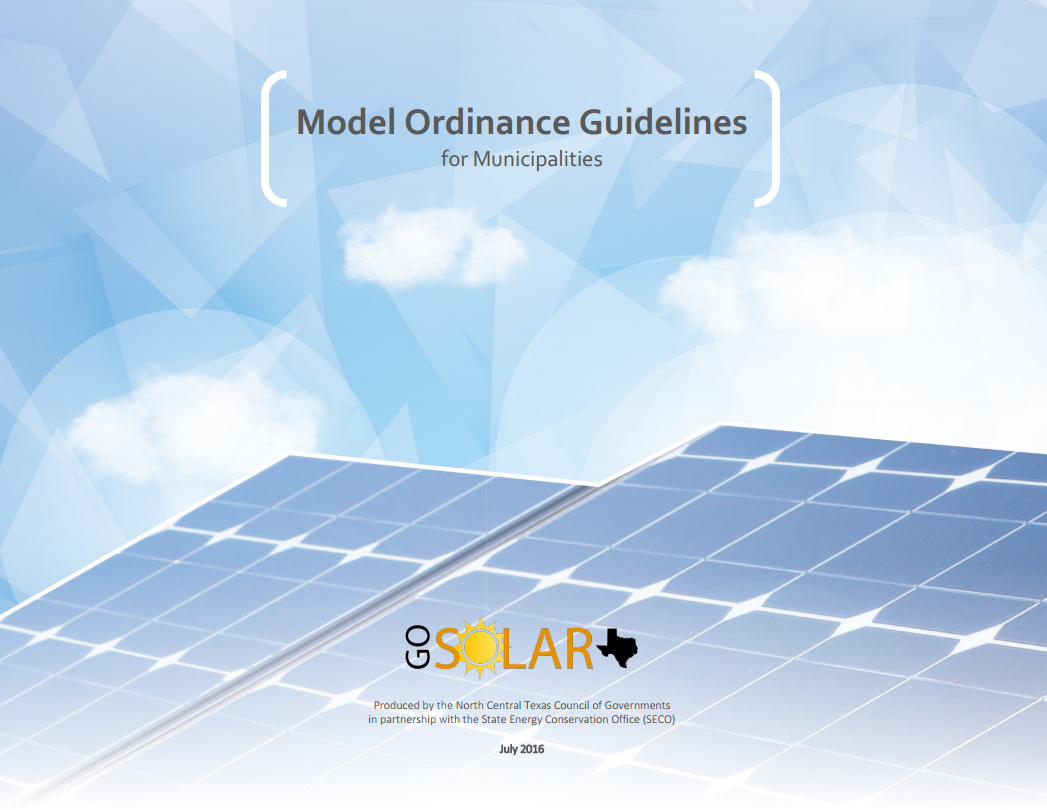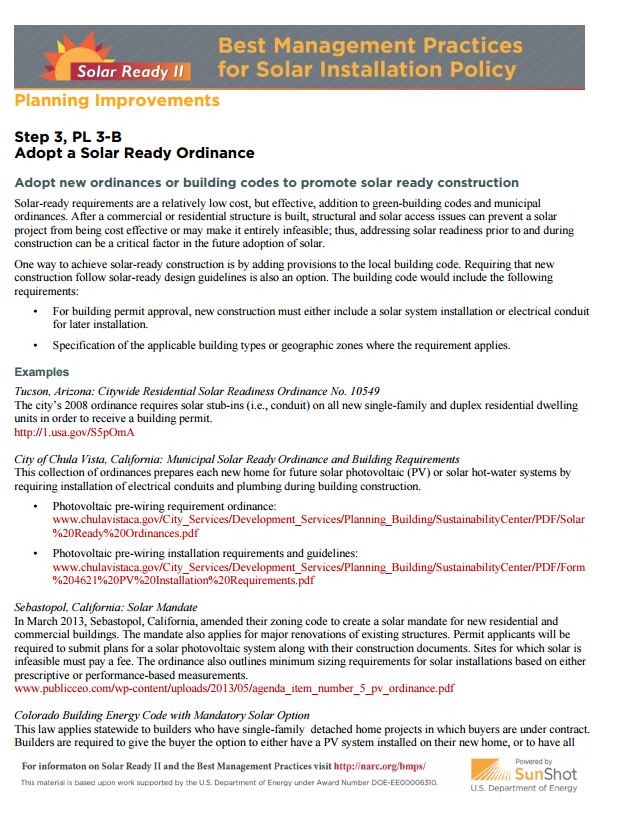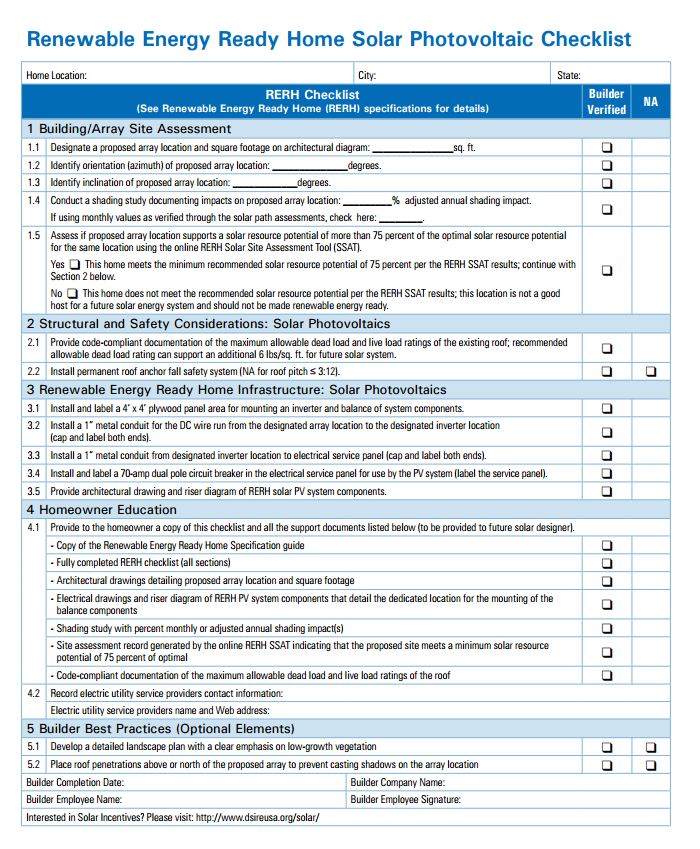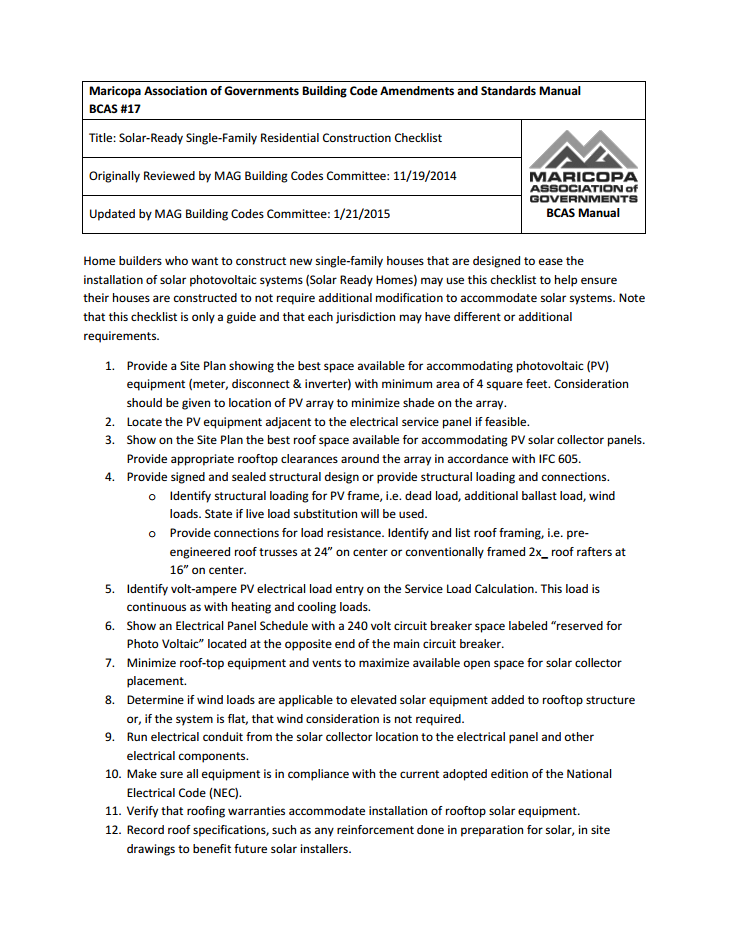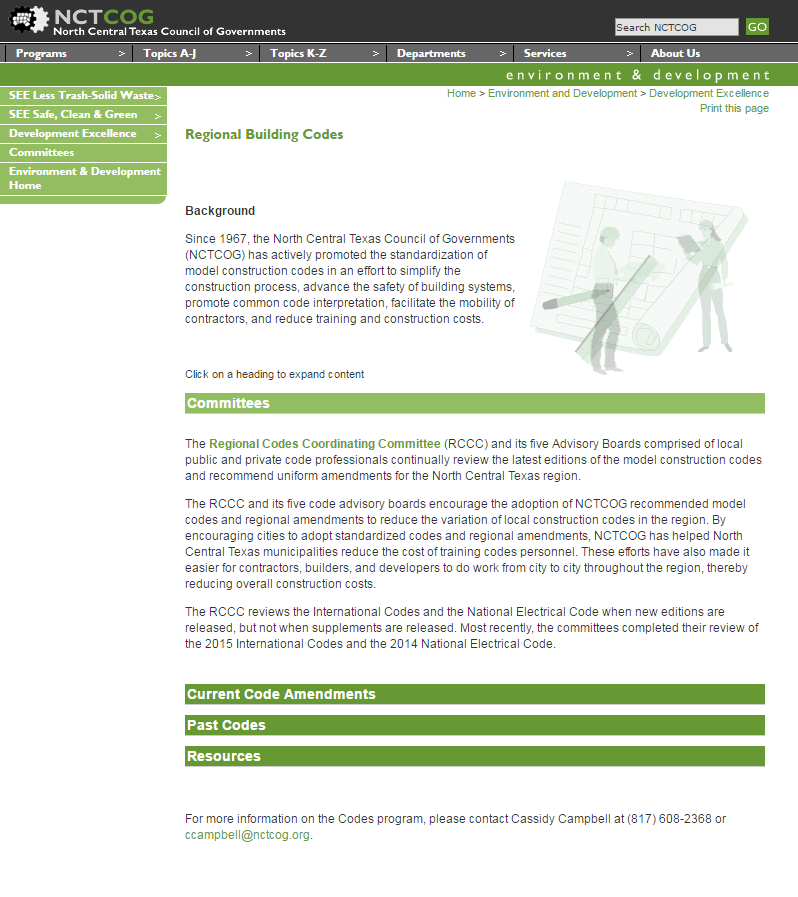A solar-ready ordinance, or even voluntary guidelines, can prevent significant and costly changes to accommodate solar PV panels post-construction. Even if the City relies exclusively on the International Residential Codes (2015 Update) to guide solar installation requirements, a solar ordinance can still be a powerful way to support solar proliferation in the jurisdiction. By requiring new construction to include capacity for potential future solar installations, the City can reduce costs and headaches for itself and for the consumers.
In addition to, or instead of, a general solar ordinance, cities may consider adopting a "Solar Ready" buildings checklist for new construction if they wish to both encourage solar installations in their jurisdiction and streamline the process for residents, solar professionals, and city staff. This checklist can be helpful for developers, architects, and other interested parties, but it can also be helpful for City planning staff as they review different aspects of a plan, including site selection and building orientation, tree siting, and building design.
- Develop a Solar-Ready Buidlings Checklist for New Construction
- OKI Rooftop Solar Ready Construction Guidelines
- Model Ordinance Guidelines for Municipalities
- Adopt a Solar-Ready Ordinance
- Renewable Energy Ready Home Solar Photovoltaic Checklist
- Solar-Ready Single Family Residential Construction Checklist
- NCTCOG Regional Building Codes
Develop a Solar-Ready Buildings Checklist for New Construction
This document is a white paper created by Solar Ready II to provide best management practices for developing a solar-ready buildings checklist for new construction and includes relevant examples.
Ohio, Kentucky, and Indiana (OKI) Rooftop Solar Ready Construction Guidelines
These voluntary guidelines have been developed for the local governments of the OKI region to share with residential developers, home builders and architects for the design and construction of new residential buildings.
Model Ordinance Guidelines for Municipalities
The Model Ordinance Guidelines for Municipalities provide guidance for cities on best practices for the development of a solar ordinance. These guidelines are based on a series of roundtable discussions held by NCTCOG with planners, sustainability managers, building inspectors, and solar industry professionals from North Texas. See page 31 for language specific to solar-ready construction.
Adopt a Solar-Ready Ordinance
This document is a white paper created by Solar Ready II to provide best management practices for adopting solar-ready ordinances or building codes to promote solar-ready construction and includes relevant examples.
Renewable Energy Ready Home Solar Photovoltaic Checklist
This Energy Star document provides an example of a solar-ready residential construction checklist.
Solar-Ready Single Family Residential Construction Checklist
This checklist provides an example for home builders to use when constructing solar-ready homes. Prepared by the Maricopa Association of Governments in the Building Code Amendments and Standards Manual (BCAS #17).
NCTCOG Regional Codes Coordinating Committee Support Statement: Solar Ready Provisions
Since 1967, the North Central Texas Council of Governments (NCTCOG) has actively promoted the standardization of model construction codes in an effort to simplify the construction process, advance the safety of building systems, promote common code interpretation, facilitate the mobility of contractors, and reduce training and construction costs. The Regional Codes Coordinating Committee has adopted an opinion statement related to Solar Ready Provisions in the 2021 International Energy Conservation Code.

